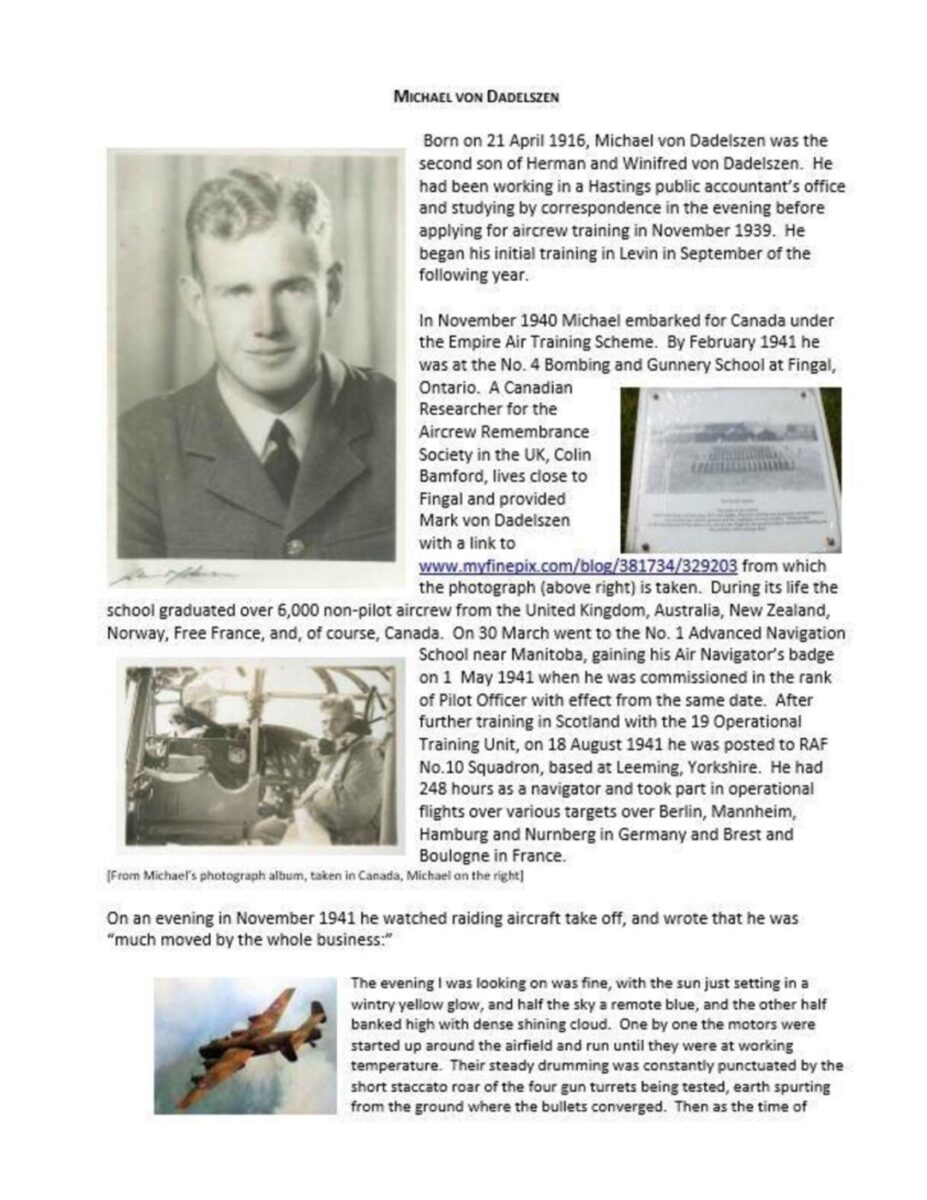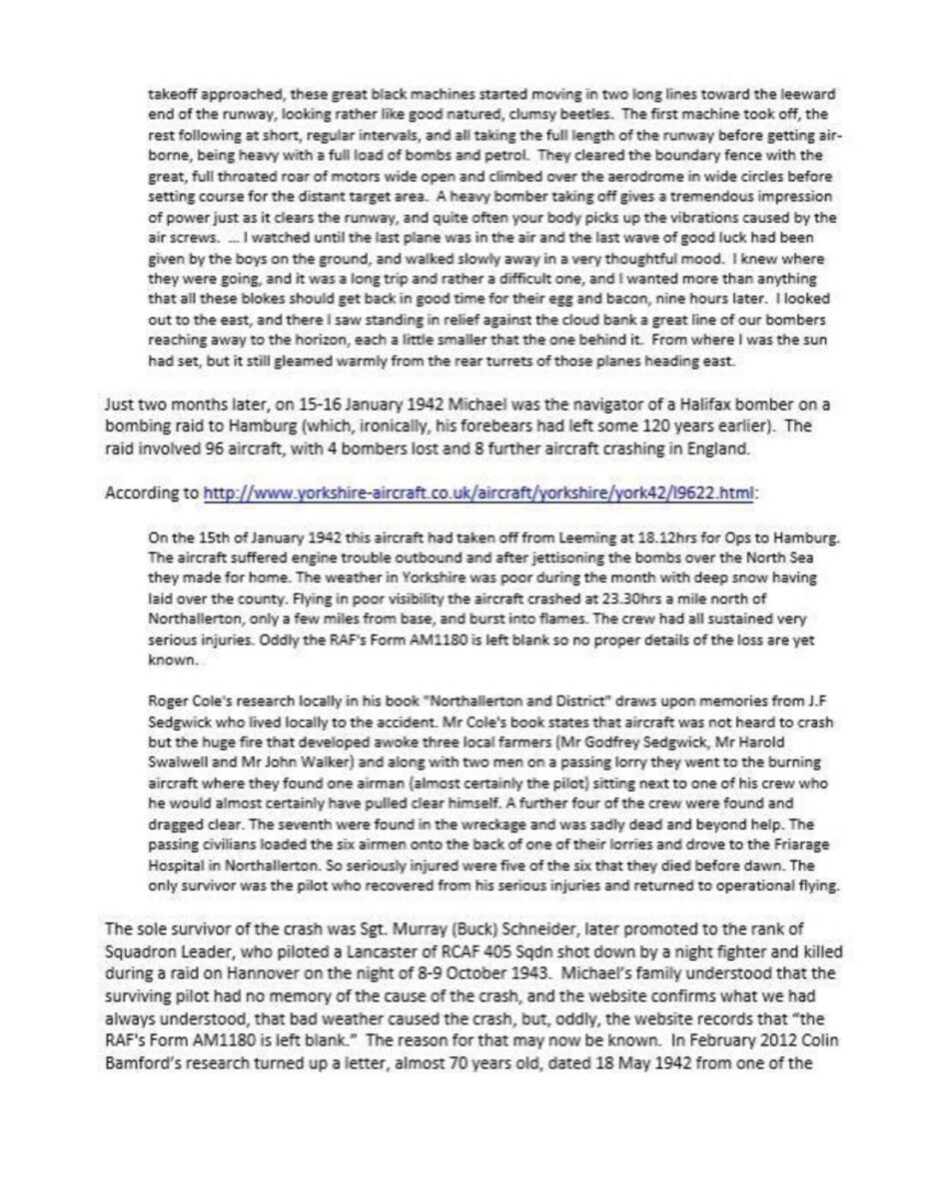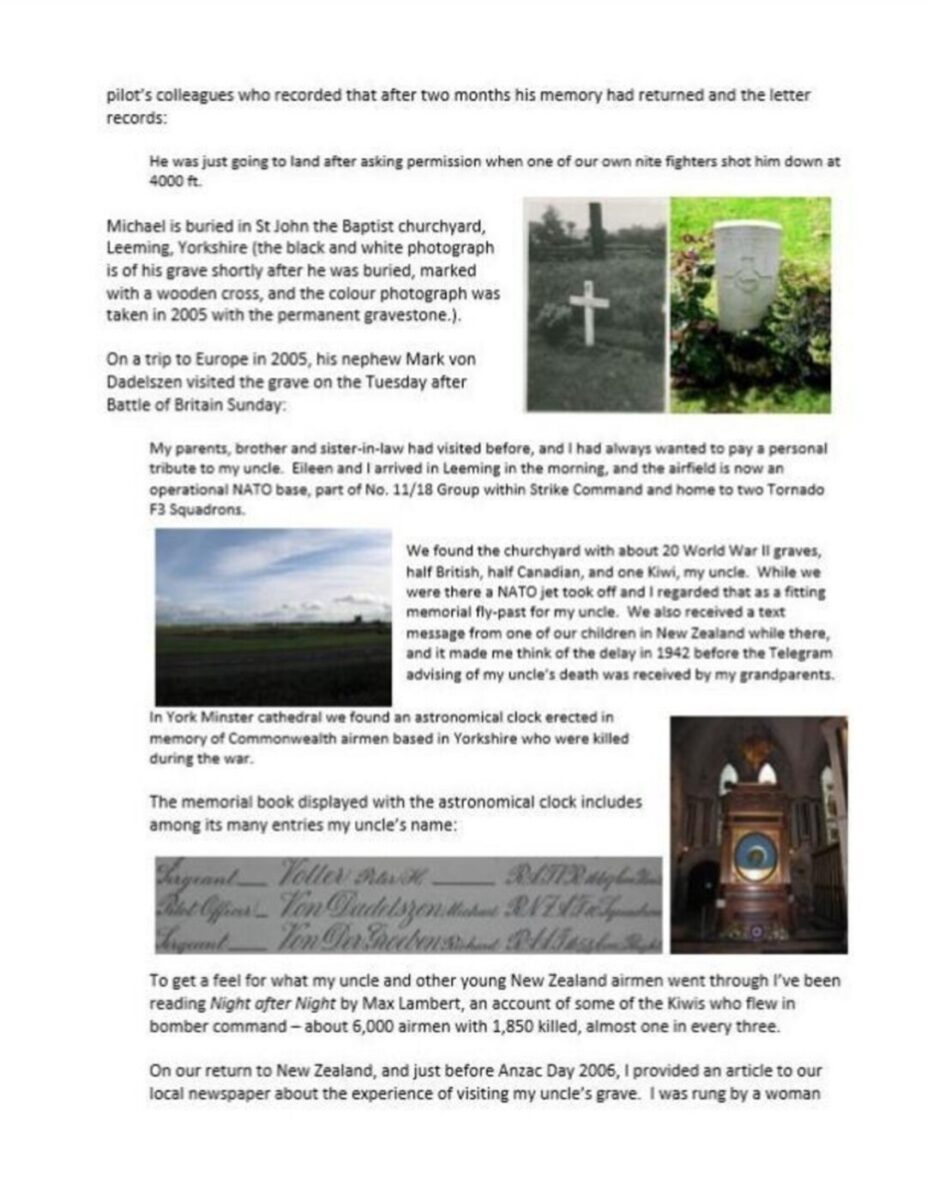takeoff approached, these great black machines started moving in two long lines toward the leeward end of the runway, looking rather like good natured, clumsy beetles. The first machine took off, the rest following at short, regular intervals, and all taking the full length of the runway before getting air- borne, being heavy with a full load of bombs and petrol. They cleared the boundary fence with the great, full throated roar of motors wide open and climbed over the aerodrome in wide circles before setting course for the distant target area. A heavy bomber taking off gives a tremendous impression of power just as it clears the runway, and quite often your body picks up the vibrations caused by the air screws. … I watched until the last plane was in the air and the last wave of good luck had been given by the boys on the ground, and walked slowly away in a very thoughtful mood. I knew where they were going, and it was a long trip and rather a difficult one, and I wanted more than anything that all these blokes should get back in good time for their egg and bacon, nine hours later. I looked out to the east, and there I saw standing in relief against the cloud bank a great line of our bombers reaching away to the horizon, each a little smaller that the one behind it. From where I was the sun had set, but it still gleamed warmly from the rear turrets of those planes heading east.
Just two months later, on 15-16 January 1942 Michael was the navigator of a Halifax bomber on a bombing raid to Hamburg (which, ironically, his forebears had left some 120 years earlier). The raid involved 96 aircraft, with 4 bombers lost and 8 further aircraft crashing in England.
According to http://[www].yorkshire-aircraft.co.uk/aircraft/yorkshire/york42/l9622.html
On the 15th of January 1942 this aircraft had taken off from Leeming at 18.12hrs for Ops to Hamburg. The aircraft suffered engine trouble outbound and after jettisoning the bombs over the North Sea they made for home. The weather in Yorkshire was poor during the month with deep snow having laid over the county. Flying in poor visibility the aircraft crashed at 23.30hrs a mile north of Northallerton, only a few miles from base, and burst into flames. The crew had all sustained very serious injuries. Oddly the RAF’s Form AM1180 is left blank so no proper details of the loss are yet known.
Roger Cole’s research locally in his book “Northallerton and District” draws upon memories from J.F Sedgwick who lived locally to the accident. Mr Cole’s book states that aircraft was not heard to crash but the huge fire that developed awoke three local farmers (Mr Godfrey Sedgwick, Mr Harold Swalwell and Mr John Walker) and along with two men on a passing lorry they went to the burning aircraft where they found one airman (almost certainly the pilot) sitting next to one of his crew who he would almost certainly have pulled clear himself. A further four of the crew were found and dragged clear. The seventh were found in the wreckage and was sadly dead and beyond help. The passing civilians loaded the six airmen onto the back of one of their lorries and drove to the Friarage Hospital in Northallerton. So seriously injured were five of the six that they died before dawn. The only survivor was the pilot who recovered from his serious injuries and returned to operational flying.
The sole survivor of the crash was Sgt. Murray (Buck) Schneider, later promoted to the rank of Squadron Leader, who piloted a Lancaster of RCAF 405 Sqdn shot down by a night fighter and killed during a raid on Hannover on the night of 8-9 October 1943. Michael’s family understood that the surviving pilot had no memory of the cause of the crash, and the website confirms what we had always understood, that bad weather caused the crash, but, oddly, the website records that “the RAF’s Form AM1180 is left blank.” The reason for that may now be known. In February 2012 Colin Bamford’s research turned up a letter, almost 70 years old, dated 18 May 1942 from one of the















Do you know something about this record?
Please note we cannot verify the accuracy of any information posted by the community.